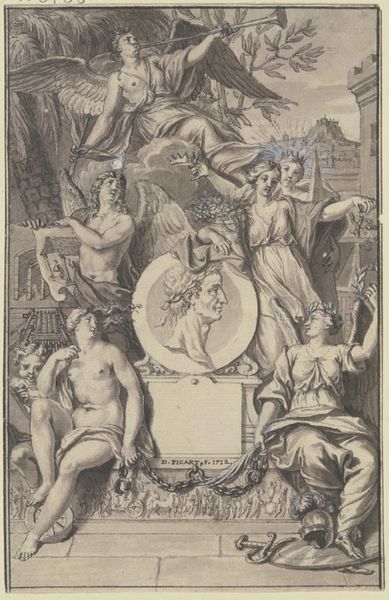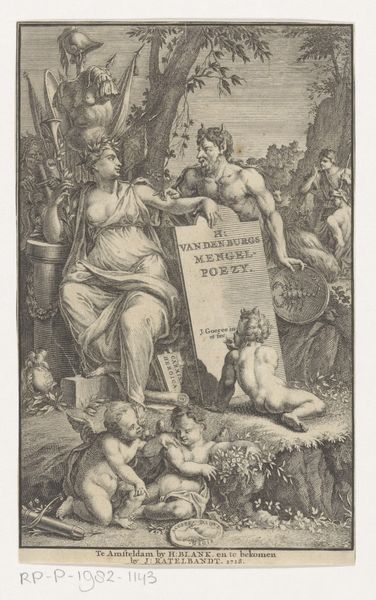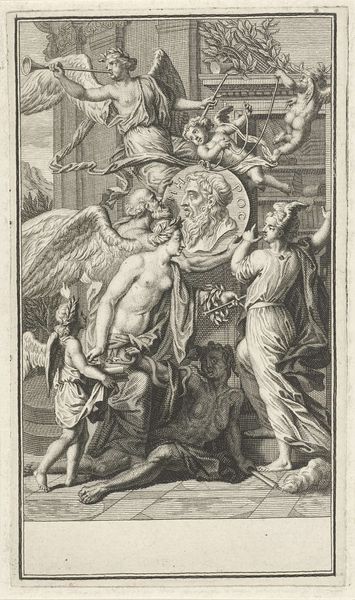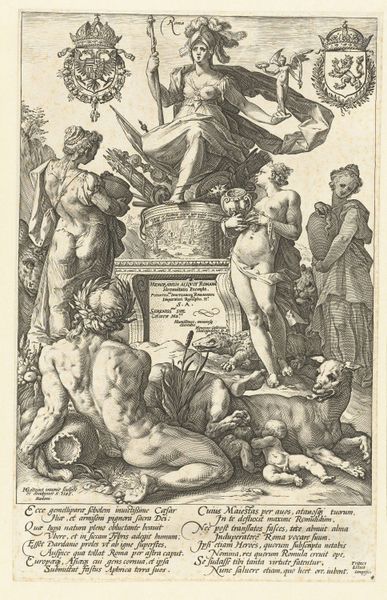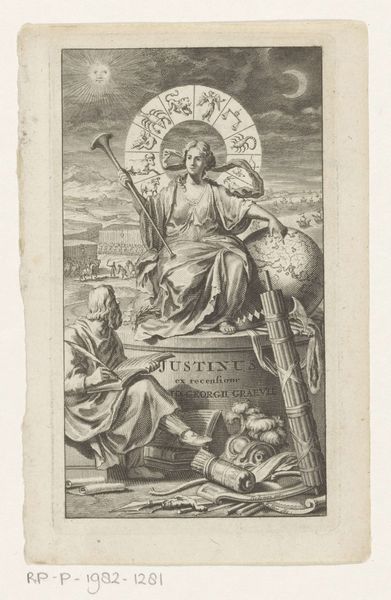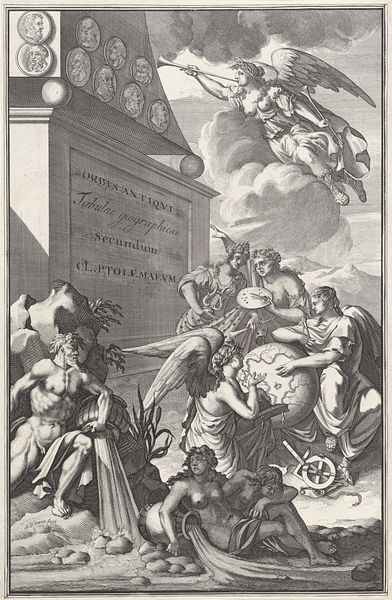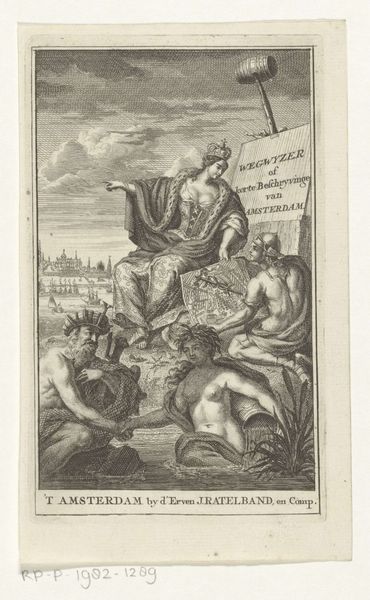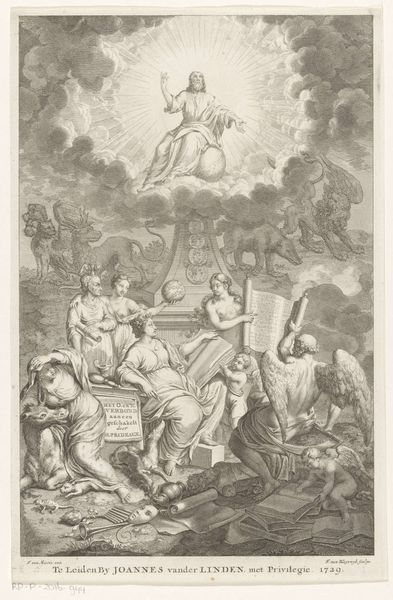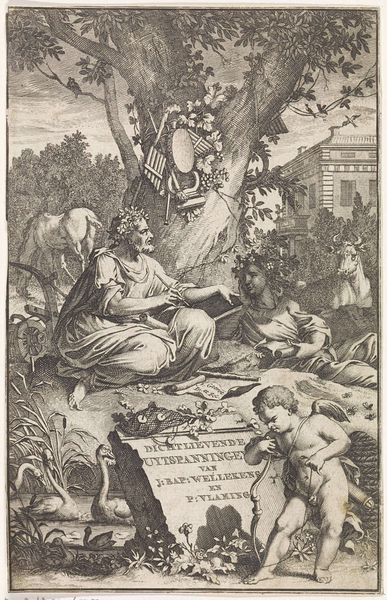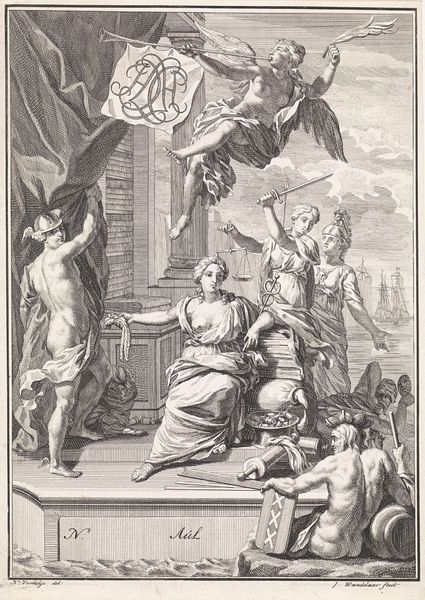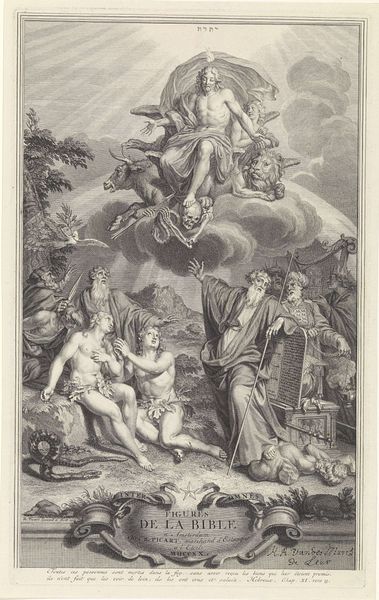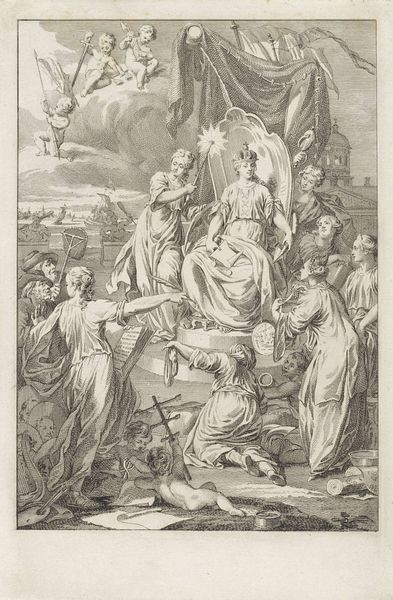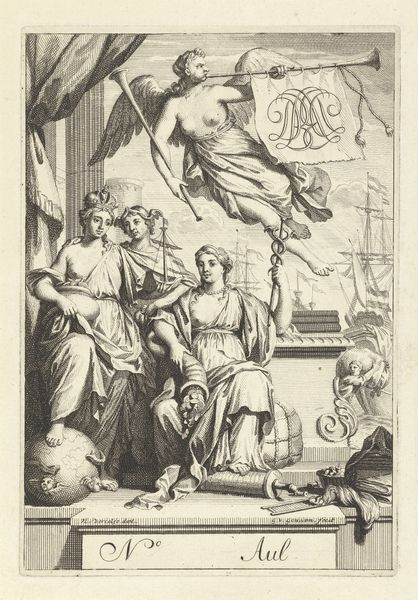
print, engraving
#
baroque
# print
#
old engraving style
#
figuration
#
history-painting
#
engraving
Dimensions: height 306 mm, width 184 mm
Copyright: Rijks Museum: Open Domain
Editor: This is Joseph Mulder's 1698 engraving, "Geloof, Hoop en Liefde" or "Faith, Hope, and Love" housed in the Rijksmuseum. There's a definite allegorical feel, and I'm drawn to the central figure holding the cross and anchor; can you help me understand how to interpret this work? Curator: Certainly. Consider the role of the church in shaping social values during this period. How do you think images like this functioned within that context? This print uses allegorical figures to visualize abstract concepts. The church used these values to educate and instill social morals. The baroque era saw many such paintings and artworks which helped educate those who could not read, solidifying that societal message in communities. Editor: So it's about reinforcing ideals, rather than a personal artistic statement? Curator: Precisely. Art in this period often served a didactic purpose, a tool for reinforcing dominant social narratives. How does understanding this influence your reading of the figures' gestures, say? The image makes faith a more central idea with a plain background. There is also the use of many human figures compared to natural backgrounds which furthers the argument that this art aims to centralize morals within communities, with many people participating rather than an internal struggle. Editor: The way the figure representing Faith gazes upwards, apart from the more grounded figures, seems symbolic of transcendence and direction? Curator: That's a keen observation! That transcendence elevates not only the spirit, but those who accept those central tenets in society. Editor: This artwork is very informative now! Considering art as a part of social, cultural, and historical contexts rather than viewing it as something abstract and purely expressive.
Comments
No comments
Be the first to comment and join the conversation on the ultimate creative platform.
